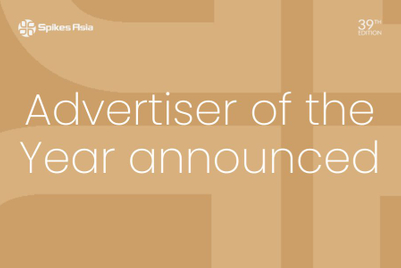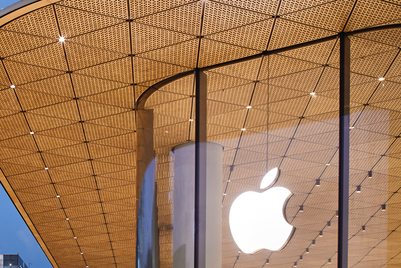
In an interview with Campaign Asia-Pacific late last year, the founder and chief executive officer of Smaato, an independent mobile ad exchange and supply-side platform (SSP) noted that close to US$60 billion is being spent in mobile.
“But most of it goes to Google, having been around for 15 years and now Facebook as well,” he said. “Due to their huge footprints, there’re able to suck in so many ad dollars.”
Kruse added from the company’s own marketing experience, not everything works on platforms such as Facebook, and that the media landscape is rich enough for marketers to explore other opportunities.
“Look are where ad spend is today, the bulk of it is still in TV,” he said. “And while digital on PC hasn’t grown as much, it also means that the industry is leapfrogging over PC to mobile channels.”
Kruse believes the need for more marketers to fully grasp the opportunities in mobile is critical, given the high penetration rates in major Asian markets such as Indonesia with its 60 million smartphone users and China with 500 million.
“India is still dominated by feature phones, so it takes a bit more to reach audiences there but thank to the rise of China-based phone brands hitting the market and we expect this ratio to change rapidly,” he added.
According to research conducted by Smaato, APAC is the highest growth region for mobile ads inventory and spending in the first half of 2015, compared to same period last year.
However, country-wise, the US continues to lead, while China grew by 315 percent, India, 279 percent, Singapore 225 percent, Indonesia, 142 percent, and Malaysia, 126 percent.
“You can now reach the majority of consumers via mobile and marketers need not go to hundreds of vendors to do it as well,” Kruse said. “You can do so via one of two DSPs, though for the total world population, we’re not quite there yet.”
But with 2.3 billion mobile users globally, it’s getting there, and today’s reach opportunity, thanks to mobile, is something that couldn’t be done before, which makes a big difference for global brands, he added.
Smaato as one of the largest independent players in the market already serves up to 6 billion ads each day, across 800 million unique monthly mobile users. Kruse declined to share details of the company’s financials, but said that it has a run rate of more than US$100 million.
Juniper Research has stated that annual global advertising spend on mobile devices is expected to reach US$105 billion by 2019, up from an estimated $51 billion this year.
It also estimates that in-app mobile ad spend will reach US$16.9 billion by 2018, compared to US$3.5 billion in 2013.
While app downloads will increase exponentially by then, the majority of in-app advertising expenditure will be allocated to social mobile giants like Facebook and Twitter, according to the research company.
The China connection
The biggest market to be tapped in Asia is, of course China, and Smaato is already positioning itself to provide advertisers a way in.
“China is an important market for us, as it is the second largest ad market in the world,” said Kruse. “While we already serve ads and have partners there, this year we’ll be focused on putting teams on the ground for China, in addition to doing the same for other markets such as South Korea, Japan, Australia and India.”
Smaato currently offers advertisers outside of China access to the market via its local partners.
“So via out inventory, advertisers can reach a lot of Chinese consumers, with a lot of data points similar to US-styled markets so that they can do what they do in own markets,” said Kruse, adding that the platform currently reaches 30 million in China and growing.
The company’s aggressive stance on partnerships is in line with its positioning as “the good guys” as Kruse describes it, a SSP that does not compete with publishers.
In November last year, it announced that it was integrating other well-known ad servers into its Smaato Publisher Platform (SPX), to connect publishers with all the biggest, and most reputable names in mobile ad serving.
Keeping the ecosystem clean
For Smaato, the quest to ensure a “clean ecosystem” has become a core objective for the business.
“We want to ensure that every publisher on board is fraud-free, brand-safe, transparent and viewable,” said Kruse.
Kruse adds that while the platform can’t guarantee 100 percent—no one in the industry can—it currently sees fraudulent impressions at a rate of 1 to 2 percent, which is considered low.
The company guarantees a rate of no more than 3 to 5 percent, aided in its fight by machine-learning technology and a team that constantly monitors the situation.
In the middle of last year, it introduced a new fraud-detection engine powered by artificial intelligence and auto-learning technology.
The tools are intended to prevent against traffic fraud by ensuring that all advertisements are gaining true traffic and are viewed by real individuals by investigating the origin of the traffic, attributing patterns to the bot networks and flagging it as fraud.
The platform also rejects fraudulent ads, allowing publishers to maintain customer trust and maximize user engagement and revenue.
The motivation behind such a heavy commitment to a fraud free ecosystem is simple, it just makes good business sense.
“It’s important,” he says. “We’re not interested in doing business with computer-generated traffic because it hurts everyone. Advertisers will record a lower conversion rate, think that mobile is not working and not put their money into it.”





.jpg&h=334&w=500&q=100&v=20250320&c=1)


.png&h=334&w=500&q=100&v=20250320&c=1)


.jpg&h=334&w=500&q=100&v=20250320&c=1)







.jpg&h=268&w=401&q=100&v=20250320&c=1)